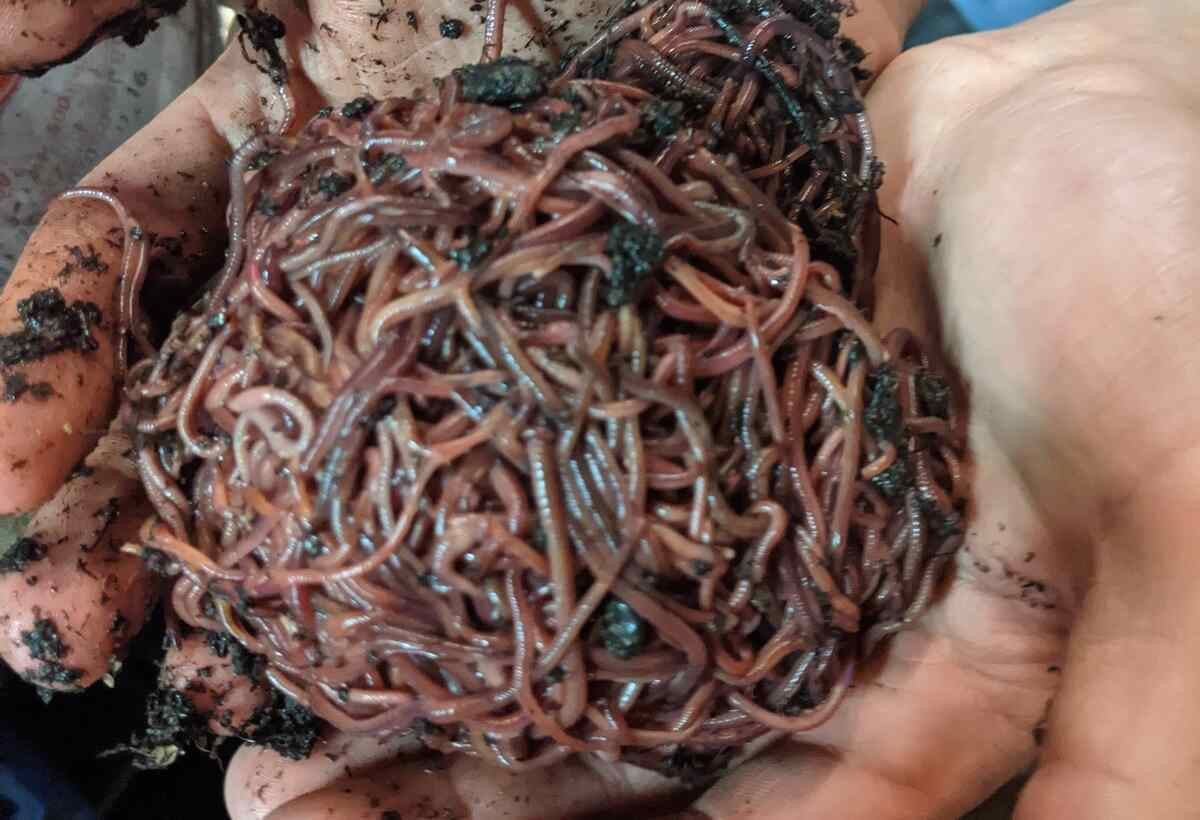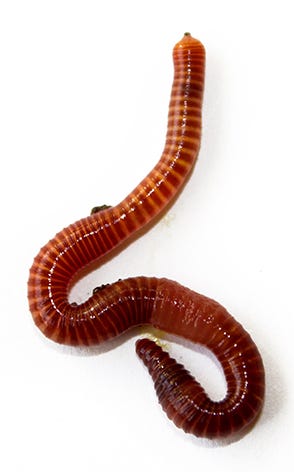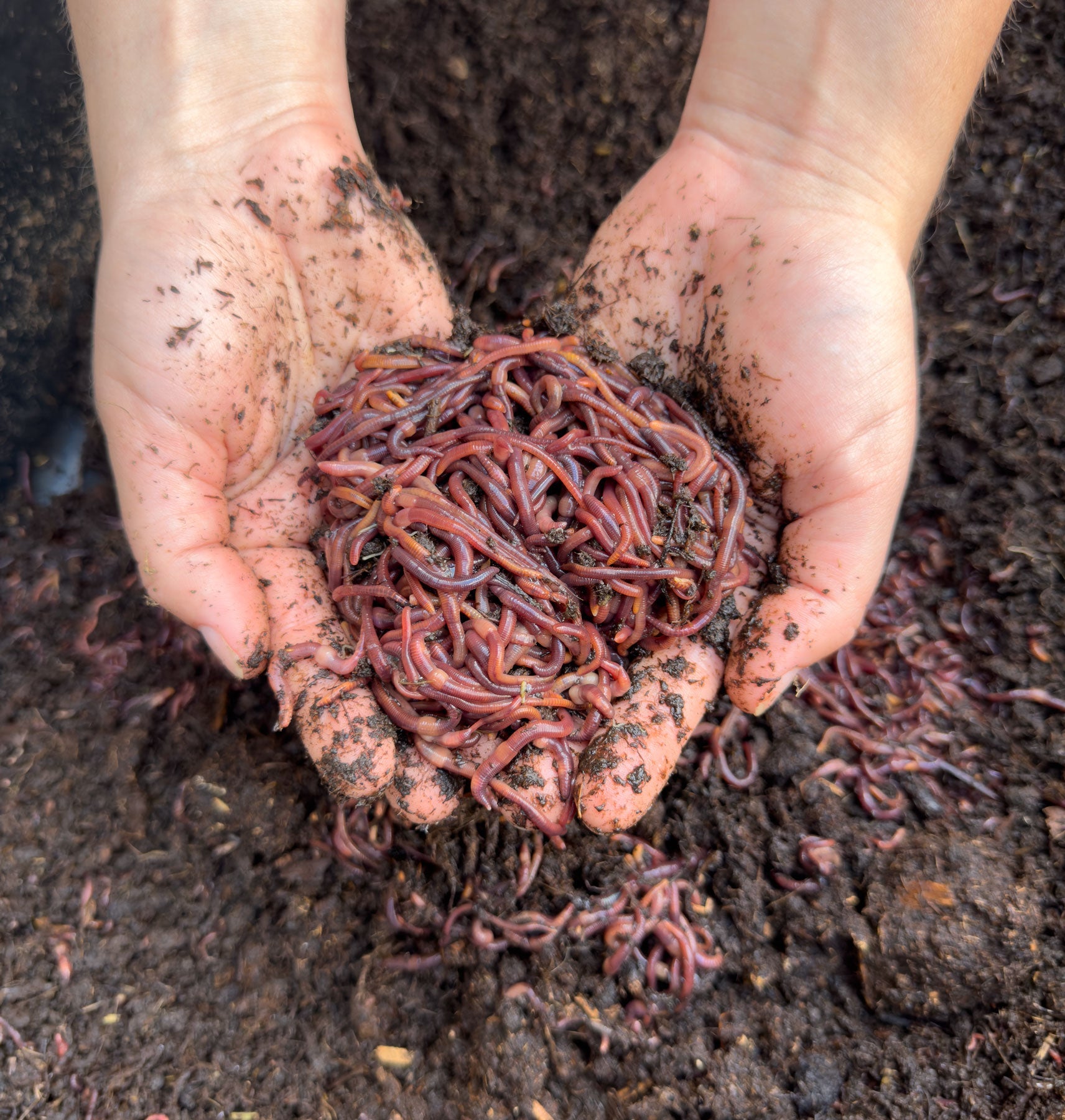Eco-friendly red wigglers: For organic gardening
Eco-friendly red wigglers: For organic gardening
Blog Article
The Duty of Red Wigglers in Lasting Horticulture
The integration of red wigglers into sustainable horticulture practices provides an engaging approach to boosting dirt health and reducing organic waste. These microorganisms not only transform kitchen area scraps into nutrient-dense garden compost through vermicomposting however also freshen the soil, promoting optimum conditions for plant development. As they break down facility natural products, they actively promote a growing microbial environment important for sustainable agriculture. Nonetheless, the ramifications of using red wigglers extend beyond mere composting; their function fit a much more sustainable future warrants a much deeper exploration of their benefits and practical applications.
Understanding Red Wigglers
Red wigglers, scientifically referred to as Eisenia fetida, are a varieties of earthworm renowned for their function in lasting gardening and composting practices - red wigglers. These worms grow in decomposing raw material, making them especially efficient in transforming kitchen area scraps and backyard waste into nutrient-rich compost. Unlike standard earthworms, red wigglers have a greater resistance for differing wetness levels and can grow in atmospheres with bountiful natural material
(red wiggler composting worms)Characteristically, red wigglers are smaller sized than their earthworm counterparts, generally measuring between 3 to 4 inches in length. They possess a reddish-brown coloration and have a segmented body framework that assists in their burrowing and feeding tasks. These organisms are hermaphroditic, indicating each individual has both male and women reproductive body organs, which permits effective population development under optimum conditions.
The environment preferences of red wigglers include damp, dark settings abundant in natural content, such as garden compost bins or worm farms. Their environmental role extends past composting; they are important in aerating the soil and helping with vitamins and mineral cycling, which ultimately adds to healthier yard environments. red wigglers. Recognizing the biology and habits of red wigglers is crucial for those looking for to apply reliable vermicomposting in sustainable gardening
Benefits of Vermicomposting
Vermicomposting deals countless advantages that boost lasting horticulture methods and add to environmental wellness. Among the main benefits is the transformation of natural waste right into nutrient-rich compost, which improves soil framework and fertility. The spreadings generated by red wigglers are loaded with useful bacteria and necessary nutrients, making them an excellent all-natural fertilizer.
Furthermore, vermicomposting considerably minimizes landfill waste. By diverting cooking area scraps and yard waste from landfills, this method not only minimizes methane discharges-- a powerful greenhouse gas-- however additionally advertises a circular economic climate, where waste is repurposed as a resource.
Another advantage is the enhancement of soil oygenation and water drainage (red wigglers). The burrowing task of red wigglers creates channels in the dirt, enabling air and water to penetrate even more easily, therefore promoting a much healthier origin system for plants
Furthermore, vermicomposting can be done on a tiny range, making it easily accessible for metropolitan gardeners and those with limited area. This method motivates environmental stewardship and awareness, as people come to be extra involved with their waste administration methods. Eventually, vermicomposting stands for a sustainable, efficient, and green method to horticulture that profits both plants and the world.
Just How to Begin Vermicomposting
Starting your very own vermicomposting system can be a satisfying undertaking that enhances your lasting gardening practices. To start, pick a proper container, such as a plastic bin or wood box, with good water drainage and ventilation. The size will rely on the volume of kitchen area scraps you produce; a container of 10-14 gallons generally is sufficient for a household.
Following, prepare the bed linens material. Shredded newspaper, cardboard, and coconut coir are superb options, giving a comfy environment for the red wigglers. Go for a bedding depth of concerning 4-6 inches, which ought to be wet yet not soaked.
Once the bedding is developed, introduce your worms. Red wigglers (Eisenia fetida) are one of the most suitable for composting. Start with around one pound of worms for every single 2-3 extra pounds of kitchen area scraps weekly.
Begin adding kitchen waste, preventing meat, dairy, and oily foods, as these can attract parasites and develop odors. Regularly monitor the bin's dampness levels and temperature level, ensuring it remains within the perfect variety for worm activity. With these first actions, you'll be well on your way to developing nutrient-rich garden compost for your yard.
Maintaining a Healthy Worm Container
A prospering worm bin needs consistent care and attention to keep an ideal environment for the red wigglers. Secret factors to keep track of consist of wetness degrees, temperature level, and food supply. Keeping a wetness level akin to a wrung-out sponge is critical; too much water can bring about anaerobic conditions, while inadequate can dehydrate the worms.
Temperature level is also critical, as red wigglers grow in a variety of 55 to 77 levels Fahrenheit. Severe temperature levels can emphasize the worms, possibly leading to mortality. Therefore, placing the container in a climate-controlled area or utilizing protecting products can aid regulate temperature level fluctuations.

Lastly, aeration is crucial. Consistently transforming the bed linens and utilizing a fork or shovel can protect against compaction and promote air flow, making sure a healthy, growing setting for the red wigglers. By sticking to these techniques, gardeners can maintain an effective worm bin that supports sustainable horticulture initiatives.
Influence On Soil Health And Wellness
Enhancing soil health and wellness with the usage of red wigglers is a fundamental aspect of lasting gardening. By consuming natural matter, red wigglers break down complex products into less complex substances, a procedure understood as vermicomposting.

(red worms near me)Researches have shown that soils enriched with worm spreadings exhibit boosted microbial task and boosted fertility, bring about higher plant returns. By integrating red wigglers right into horticulture practices, garden enthusiasts not only improve their dirt but also add to an extra lasting agricultural system, stressing the interconnectedness of soil health and wellness and environmental stewardship.

Final Thought
Finally, red wigglers substantially contribute to sustainable horticulture with their reliable vermicomposting techniques. Their capacity to convert natural waste into nutrient-rich compost boosts dirt fertility and supports a diverse microbial environment. Their burrowing activity enhances soil aeration and water retention, benefiting plant health. By advertising waste decrease and cultivating a circular economic situation, red wigglers arise as essential parts in environment-friendly horticulture campaigns, highlighting their important role in ecological sustainability.
Report this page